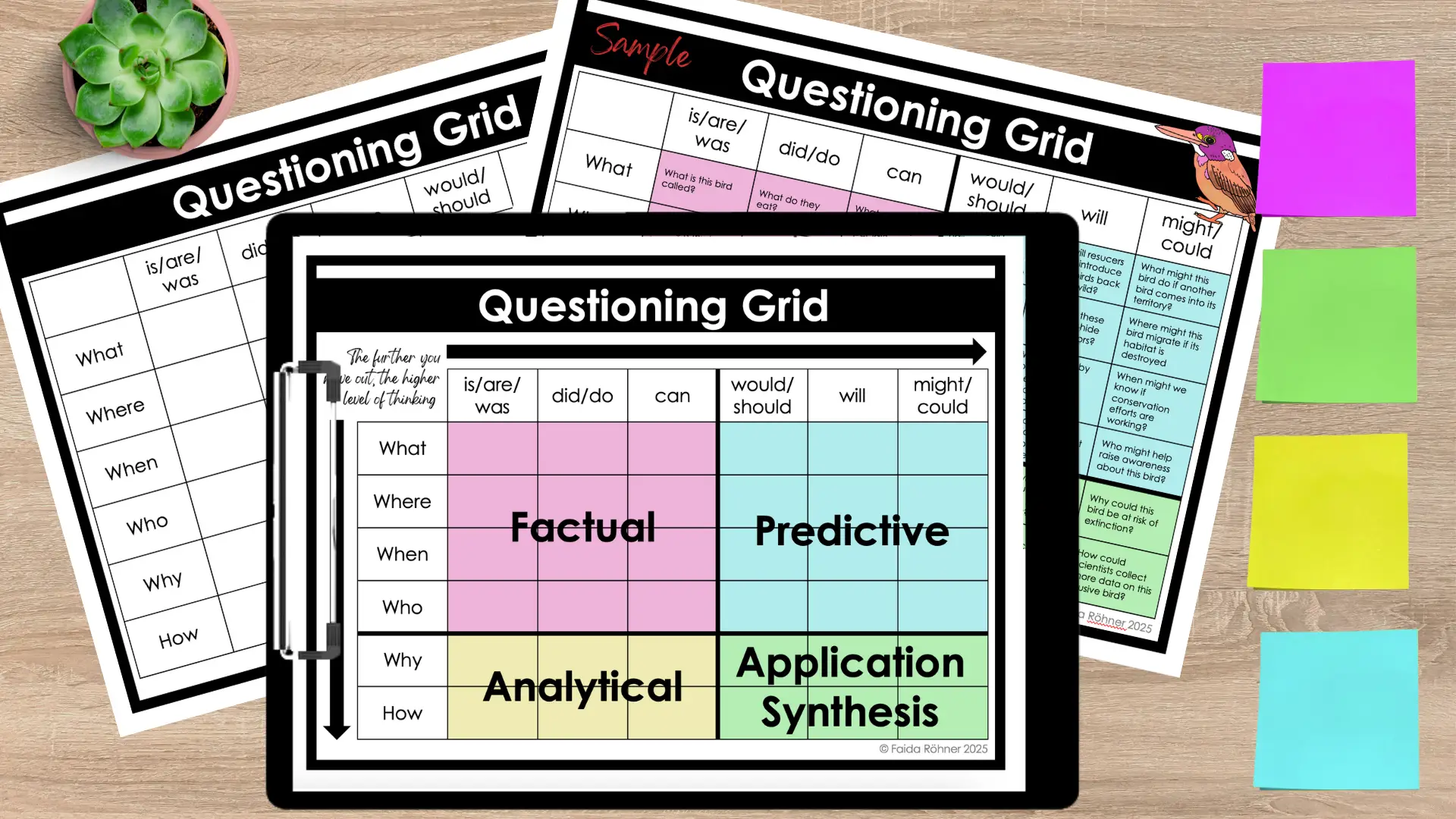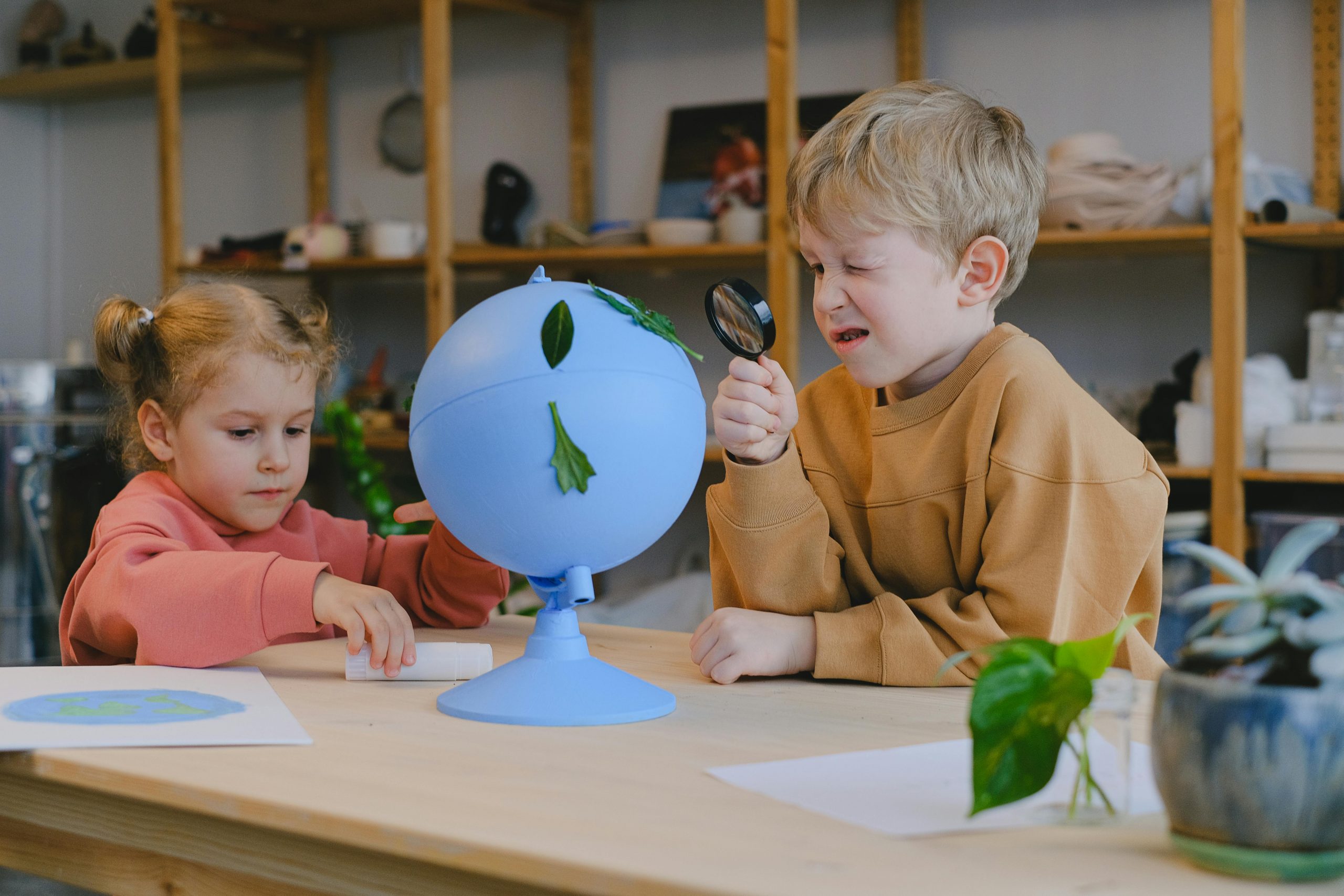So you know that moment when you start a new unit and you want to find out what your students already know about the topic…just to find out at the end of whatever preassessment you decided to give – discussion, mindmap, etc. – that your students know absolutely nothing (or just about). The plan you had for the unit just went out the window because they’re starting from zero. So disheartening, right?! So then you scramble to modify the start of your unit. But then, after you’ve put all this energy into modifying your lessons, some student says, “Oh yeah…we did this in Mrs. Wright’s class last year!” I mean, you’re glad that they know something but talk about a kick to the gut…all that time unnecessarily modifying! I know I’ve been there, but let me tell you using a provocation to launch a unit has changed this and added so much more value to the start of my units. That, my friends, is the power of provocations in the classroom. I still remember the first time I used one intentionally and thought, “Wait… this is working. They’re engaged, they’re asking questions, and they haven’t even noticed the learning part yet.”
What Is a Provocation?
A provocation is an experience, object, or resource designed to spark thinking, curiosity, and conversation. It provokes ideas, questions, and wonderings. In inquiry-based learning, provocations are the entry point into deeper exploration. Think of it as the educational version of an appetizer – just enough to whet their appetite, get their brains moving, and leave them wanting more. This is the power of provocations!
Why Use a Provocation?
- Guides learning without jumping straight in
- Appetizer, not the whole meal
A good provocation warms students up. Instead of throwing them into a preassessment cold, they get a chance to activate prior knowledge in a meaningful and often exciting way. It’s not meant to teach everything – it’s meant to set the tone, ignite curiosity, and give students something to chew on before diving deep. This is one of the most powerful ways to spark inquiry in the classroom and create a space where student questions drive the learning.
When to Use a Provocation
- Before a preassessment
- To introduce a new concept or unit with engagement
Ever give a preassessment and watch students freeze up like deer in headlights? Yep, me too. Using provocations in inquiry-based classrooms can ease them into the unit by helping them uncover what they already know. It sets the stage and gets students ready to explore.
Types of Powerful Provocations
-
- Books: Picture books, excerpts, or even a book cover can spark a ton of conversation.
-
- Videos: A short clip or documentary excerpt is a great way to launch thinking.
-
- Explorations: Let them touch, test, and tinker.
-
- Demonstrations: A quick science experiment or simulation can work wonders.
Provocations that spark curiosity and critical thinking are especially effective when they’re multi-sensory.
Pro tip: Visual provocations are gold for ELLs. A powerful image can communicate ideas, set context, and invite questions without needing tons of vocabulary upfront.
Example of a Powerful Provocation: “On the Move” Unit
One of my favorite provocations is for a unit I taught called “On the Move”. Students were meant to explore the social, economical and political reasons why people move, where people move to and from and the effects of people moving. To start this unit, I read My Diary from Here to There by Amada Irma Pérez to my students. This is a book about a girl’s journey from Mexico to the United States.
What I love about this book is that it is in both English and Spanish. This real-world provocation not only introduced students to the concepts of perspective and causation but also the role of language. I invited one of my Spanish-speaking parents to read the Spanish parts, and I read the English sections. My Spanish-speaking ELLs loved hearing their home language. When the Spanish parts were read before the English, this gave us the perfect opportunity to talk about the difficulties of learning and expressing oneself in a second language. The students were so engaged and loved guessing what some words were in Spanish. My Spanish-speaking ELLs were so proud to tell the class if they were correct or not. They also loved knowing what was going on before everyone else in the class, which was the opposite of their typical day-to-day experiences at school.
Right before the main character moved in the story, we stopped reading and asked students to predict what they think would happen. Ending the provocation with a heightened sense of anticipation is one of the most powerful ways to encourage student-led inquiry. It was the catalyst for some excellent student questioning and propelled us into some really meaningful investigations, which is exactly the power using of provocations.
…and in case you’re wondering, I closed the unit by finishing the story. It would be cruel not to let them know how it ended.
For more on how I use literature in my units, check out my blog post on Top 5 Ways to Use Literature to Make Real-World Connections.

Igniting Student Thinking by Forming Deeper Questions
One of the best things about provocations? They get students asking questions. And questions = inquiry = deeper learning. The power of provocations in inquiry-based learning lies in their ability to spark authentic student questions. I love using a question chart to help guide students in forming different types of questions. It’s especially helpful for ELLs, but honestly, it levels up everyone’s questioning game. Encourage them to move beyond “What is it?” to “Why does it matter?” or “What would happen if…?”
Below, you will find a free copy of the questioning grid that I love to use with my students. It can be helpful to print it on a larger piece of paper if you would like to give students more space to write. Click the button below to get this freebie.
Questioning Grid
The Questioning Grid is a great opportunity to get students to think deeper.
What to Do With Student Questions
-
- Sort Them: Let students help sort questions into categories (e.g., fact-based, opinion-based, wonderings).
-
- Prioritize: Not every question will hit the mark (and some will be wild), but that’s okay. Focus on the ones that connect to your unit.
-
- Use Them in Planning: Let the questions guide your lessons and inquiry experiences.
-
- Challenge Students: Post those quirky, offbeat questions somewhere visible. Encourage students to explore answers independently throughout the unit.
At the end of the unit try revising the questions, celebrating curiosity and continuing to encourage lifelong learning. Ask students which questions were answered and which ones are still lingering. Talk about the process of learning and how great questions lead to more discovery. But let’s be honest…not all questions have easy answers, and that’s okay. Talk about how they might continue exploring their ideas and curiosities beyond the classroom.
Ultimately, the power of provocations is that they make learning more relevant, and more student-driven. They honor what students already know, challenge them to think deeper, and build the kind of inquiry-based mindset that makes learning real and meaningful.
Try out a provocation in your next unit and let me know how it goes! And don’t forget to grab your free Questioning Grid to help students form meaningful questions and dive deeper into learning.
You can always reach out to me using the contact form. – I would love connect and hear your classroom stories!

